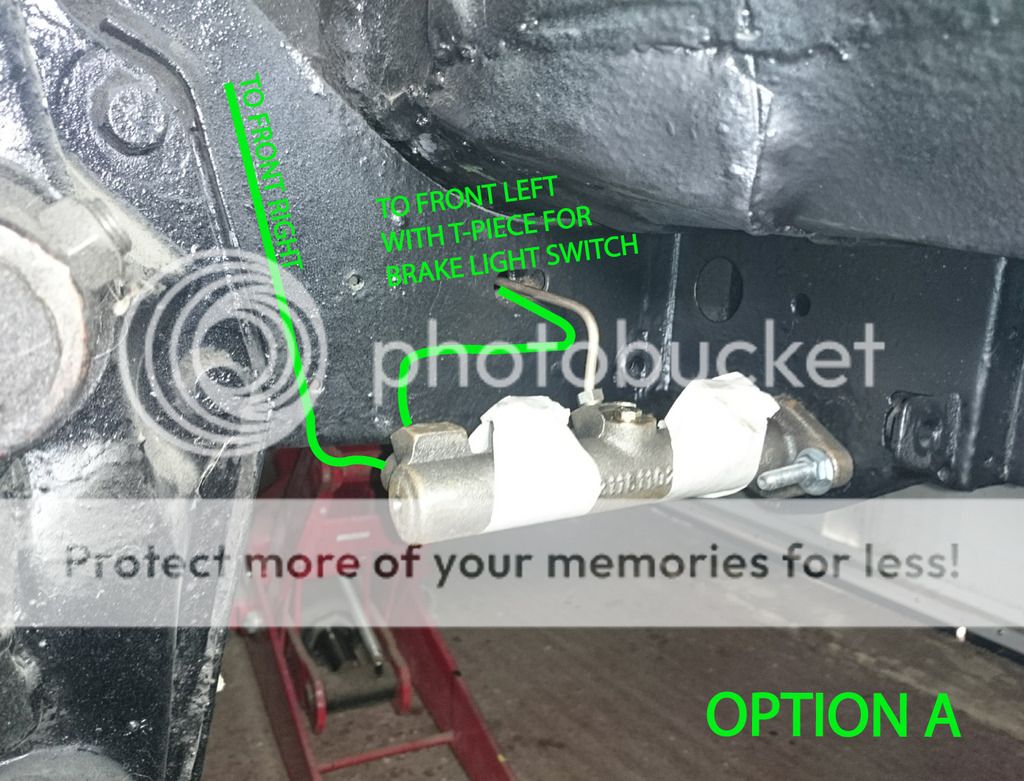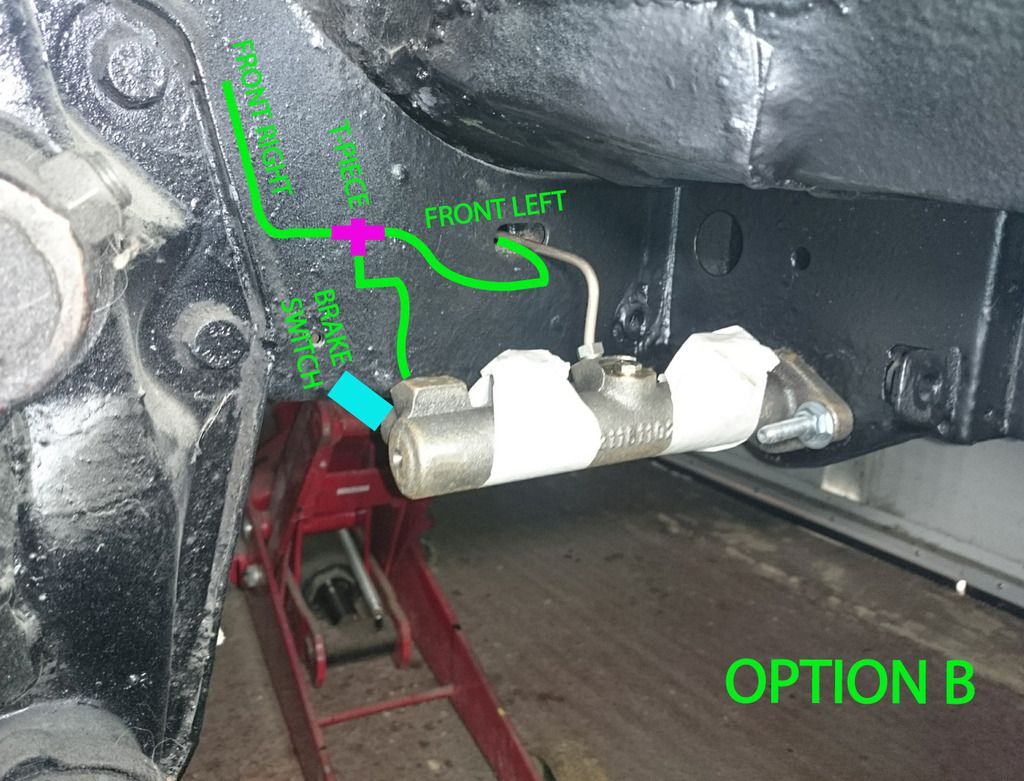cunning plan
Well-known member
- Joined
- Jul 15, 2008
- Messages
- 2,625
- Reaction score
- 1
- Location
- Northamptonshire
- Year of Your Van(s)
- 1968
- Van Type
- Clipper / Microbus
The VWH diagram shows the front brake pipes being routed from the Master Cylinder to a T-Piece under the middle of the cab area, then split to the left and right wheels. However, doing it this way seems an unnecessary waste of pipe as you have one pipe going back passed itself to get to the wheel closest to the Master Cylinder, if that makes sense?
Anyway, looking at the Master Cylinder, the back section has two 'ports'. One is intended for the brake switch, however, I have seen a few examples where this switch port is blocked up to move the switch to another T-Piece further down stream of the pipes because the switch would hit the chassis on a RHD bus, which, looks very close on my bus, although I do not have a switch to offer up and test for space right now.
So, I thought of these alternatives. I prefer Option A, but if there is a reason why you should not be using the brake switch 'port' as a brake line, I guess Option B is the next tidy and logical alternative.

What do you guys think? I cannot think of a reason not to use the Master Cylinder in this way?
Otherwise, how about this:

Anyway, looking at the Master Cylinder, the back section has two 'ports'. One is intended for the brake switch, however, I have seen a few examples where this switch port is blocked up to move the switch to another T-Piece further down stream of the pipes because the switch would hit the chassis on a RHD bus, which, looks very close on my bus, although I do not have a switch to offer up and test for space right now.
So, I thought of these alternatives. I prefer Option A, but if there is a reason why you should not be using the brake switch 'port' as a brake line, I guess Option B is the next tidy and logical alternative.
What do you guys think? I cannot think of a reason not to use the Master Cylinder in this way?
Otherwise, how about this:


